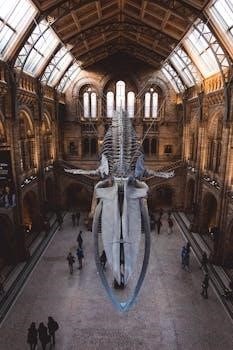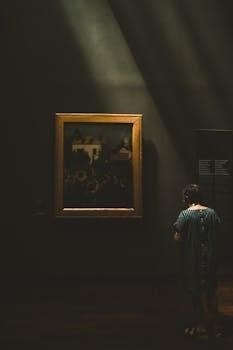Self-guided museum tours offer a personalized way to explore exhibits, allowing visitors to discover at their own pace. These tours provide flexibility and control over the museum experience. They can enhance engagement through interactive elements, fostering a unique connection between the visitor and the exhibits.
Defining Self-Guided Museum Tours
Self-guided museum tours are a method of exploring museum exhibits where visitors navigate and learn at their own pace, without a designated guide. These tours utilize various tools such as audio guides, mobile apps, and printed materials to provide information and context about the artifacts and displays. They empower individuals to engage with the content in a way that aligns with their interests and preferred learning styles. Unlike guided tours, which follow a fixed path and schedule, self-guided options offer flexibility, allowing visitors to spend more time at exhibits that capture their attention. They also allow for a more solitary and personal engagement with the museum experience. These tours are often enhanced with interactive elements, such as games and quizzes, and multimedia integration, offering a richer and more engaging experience than traditional museum visits. Overall, self-guided tours aim to provide a tailored and enriching learning environment for each visitor. They are a flexible way to explore, learn, and enjoy museum offerings. They are also a great way to accommodate individual needs and preferences.

Key Components of Self-Guided Tours
Essential elements include interactive storytelling, multimedia integration, clear navigation, and accessibility features. These components enhance visitor engagement and ensure a comprehensive and enriching self-guided museum experience for everyone.
Interactive Storytelling Elements
Interactive storytelling is a powerful tool that brings cultural sites to life, immersing visitors in the history and significance of a site. By combining narrative with multimedia elements, self-guided tours can engage visitors more deeply, moving beyond simple factual presentations. Storytelling in a museum setting can be enhanced using various methods, such as audio narratives, dramatized accounts, and character-driven perspectives. Incorporating these elements can transform the way visitors experience the exhibits, creating a memorable and emotional connection. The use of first-person accounts or historical reenactments can allow visitors to feel more personally involved with the content. Interactive storytelling allows the museum to present its information in a way that is both entertaining and educational, making the experience more compelling and engaging. By understanding your audience and designing for engagement, you can create compelling and memorable experiences. Interactive elements also encourage visitors to explore further and ask questions, enhancing their overall experience of the museum. This way, learning becomes an active and enjoyable process for the visitor, rather than a passive reception of information.
Multimedia Integration
Multimedia integration in self-guided museum tours significantly enhances the visitor experience by combining various forms of media. This includes audio guides that provide detailed narrations, video commentary that offers visual context, and interactive games that encourage active participation. These tools help to make the information more accessible and engaging. The use of tablets or smartphones allows for the display of high-resolution images, videos, and interactive maps. Multimedia also provides flexibility in delivering content, allowing museums to cater to different learning styles and preferences. The integration of augmented reality (AR) can create immersive experiences, allowing visitors to see virtual objects overlaid on real-world exhibits. This technology can also bring historical events to life. Multimedia integration transforms passive observation into active engagement, making the museum experience more interactive and memorable. By incorporating a variety of multimedia options, museums can ensure that visitors of all ages and backgrounds can connect with the exhibits in a meaningful way. This approach also promotes deeper learning and understanding of the material presented.
Navigation and Wayfinding
Effective navigation and wayfinding are crucial components of successful self-guided museum tours, ensuring visitors can easily move through the space. Clear signage, both physical and digital, is essential for guiding visitors. Interactive maps on mobile apps provide real-time location information and help plan routes. These maps often include points of interest and exhibit highlights, making it easier to locate specific items. Beacon technology can also be used to provide contextual information as visitors move through the museum. The ability to navigate seamlessly enhances the overall experience, allowing visitors to focus on the exhibits rather than worrying about getting lost. Digital wayfinding tools can also offer personalized routes based on visitor interests or time constraints. This adaptability is particularly useful in large museums with extensive collections. Consistent and intuitive navigation reduces frustration and allows visitors to explore the museum at their own pace. The inclusion of accessibility features, such as audio prompts and visual cues, ensures that all visitors can easily navigate the space.
Accessibility Features
Accessibility features are paramount in self-guided museum tours, ensuring that all visitors can enjoy the experience. These features include providing options for those with visual, auditory, or mobility impairments. Audio descriptions and transcripts cater to visitors with visual and auditory challenges, offering detailed explanations of exhibits. Text-to-speech functions enhance digital content for those with reading difficulties. Furthermore, larger font sizes and high-contrast color schemes help to improve readability. Physical accessibility includes wheelchair ramps and elevators to ensure all spaces are easily navigable. Tactile elements, such as raised diagrams and replica objects, provide a hands-on experience for visually impaired visitors. Navigation tools with audio and visual cues enhance wayfinding for all visitors. Clear and concise language is used to enhance comprehension for a variety of abilities. These features work together to create an inclusive and enriching experience for every visitor. By addressing varied needs, museums can ensure that their tours are accessible to a broader audience.

Technological Aspects of Self-Guided Tours
Technology enhances self-guided tours through audio guides, mobile apps, and beacon technology. These tools provide interactive and informative experiences. They offer visitors flexibility and personalized exploration within museums.
Audio Guides
Audio guides are a cornerstone of self-guided museum tours, offering pre-recorded commentary on exhibits. They allow visitors to explore at their own pace while receiving detailed information. These guides often include additional features like video commentary, enhancing the overall experience. The technology behind audio guides has become increasingly sophisticated, with some incorporating interactive games to further engage users. This provides a very useful way for visitors to learn more about the museum’s collection, and often includes a narrative to enhance the visitor experience. Audio guides also contribute to accessibility, providing an alternative for those who prefer listening to reading. This is a traditional and versatile option for self-guided tours, combining ease of use with rich content delivery. They are available in multiple languages catering to a diverse visitor base. This enhances the overall experience, allowing for a more personal and engaging museum visit. These user-friendly tools improve the museum visit for many. They also facilitate a deeper understanding of the exhibits. The ability to pause and replay content adds to the flexibility and value of audio guides for museum visitors.
Mobile Applications
Mobile applications have revolutionized self-guided museum tours, offering a dynamic and interactive experience. These apps provide a range of features, including interactive maps, exhibit information, and multimedia content. They allow visitors to customize their tour based on their interests. Mobile apps often incorporate augmented reality, enhancing the viewing experience. These applications can also facilitate navigation within the museum, making it easier for visitors to explore. Furthermore, they offer the possibility to include interactive games and quizzes, making learning more engaging. Many apps include accessibility features, catering to visitors with different needs. Mobile applications are a cost-effective solution and can be easily updated, ensuring the latest information is always available. These applications improve visitor engagement and foster a more personalized museum visit. They also allow for post-visit engagement, with surveys and feedback mechanisms. The use of mobile apps in self-guided tours provides a flexible and immersive experience that enhances the connection between visitors and museum collections, providing a modern and convenient approach to museum exploration.
Beacon Technology
Beacon technology plays a significant role in enhancing self-guided museum tours. By using small, wireless devices that transmit signals, beacons can trigger content on visitors’ mobile devices as they move through the museum. This location-based technology offers a highly personalized experience, delivering relevant information about nearby exhibits. Beacon technology enables real-time interaction, providing context-aware content at specific points of interest. This enhances the visitor experience by offering a seamless flow of information without requiring manual input. Beacons can also track visitor movement, providing data for museums to optimize layouts and improve tour experiences. They allow for targeted notifications, guiding visitors through specific pathways or highlighting special exhibits. The technology can also be used to trigger interactive elements like audio guides or augmented reality experiences. Beacon technology helps to create a more immersive and engaging environment. They also offer valuable insights into visitor behavior, which can be used to improve the overall museum experience. This innovative approach makes self-guided tours more intuitive, enriching, and personalized, creating a connected journey throughout the museum.

Content and Engagement Strategies
Creating engaging content is essential for effective self-guided tours. Incorporating interactive games and adapting content for diverse audiences enhances the visitor experience, ensuring a memorable and educational journey through the museum.
Engaging Content Creation
Crafting compelling narratives is crucial for successful self-guided museum tours. Content should be informative, accessible, and tailored to diverse audiences. Interactive storytelling techniques, incorporating multimedia like videos and images, can bring exhibits to life. The use of clear, concise language and engaging questions can encourage visitor participation. Furthermore, incorporating elements of gamification, such as scavenger hunts or quizzes, can enhance engagement and learning. It’s important to remember that content should be adaptable for different age groups and knowledge levels. By focusing on a well-structured and interesting narrative, museums can transform a simple walk-through into a memorable experience. Providing contextual information and behind-the-scenes insights can deepen visitors understanding and connection with the museum’s collection. The goal is to create content that sparks curiosity and encourages exploration, making the self-guided tour an enriching adventure. In addition, content should be kept up-to-date and relevant to maintain visitor interest.
Incorporating Interactive Games
Interactive games can significantly enhance the appeal of self-guided museum tours by transforming passive observation into active participation. Games can be designed to reinforce learning, test knowledge, or encourage exploration of specific exhibits. Quizzes and trivia challenges related to the collections can make the experience more engaging and memorable. Scavenger hunts, which prompt visitors to find particular objects or details, can be a fun way to encourage interaction. Digital puzzles and virtual reality experiences can also provide a unique and immersive perspective. The use of game mechanics can cater to different learning styles and preferences, making the tour more accessible. By integrating elements of competition and rewards, museums can motivate visitors to engage more deeply with the content. Games should be relevant to the exhibits and designed with clear instructions to ensure smooth navigation through the tour. The goal is to make learning fun and accessible for all visitors, regardless of age or background. These interactive elements transform a museum visit into an adventure.
Adaptability for Different Audiences
Self-guided museum tours should be designed to cater to a diverse range of visitors, each with unique needs and preferences. Adaptability is key to ensuring that everyone can enjoy the museum experience. Content should be presented in multiple formats, including text, audio, and visuals, to accommodate different learning styles. Language options are essential for international visitors, while simplified content and larger font sizes can benefit younger audiences and those with visual impairments. Interactive elements, such as games and quizzes, should have varying levels of difficulty to cater to different age groups and knowledge levels. The tour should also be flexible enough to allow visitors to choose their own pace and focus on areas of particular interest. Accessibility features, such as wheelchair-friendly routes and captioning for videos, are crucial for ensuring inclusivity. By designing tours with adaptability in mind, museums can create a welcoming and engaging experience for all visitors, regardless of their background or abilities. This ensures that everyone can connect with the museum’s collection.

Post-Tour Activities
Post-tour activities are crucial for gathering visitor feedback and enhancing future self-guided tours. Surveys and feedback collection provide valuable insights into the visitor experience, helping museums improve their offerings. This process helps create better engagement.
Surveys and Feedback Collection
Post-tour surveys and feedback mechanisms are essential components for refining self-guided museum experiences. Collecting visitor feedback allows museums to understand what aspects of the tour were most engaging and where improvements can be made. These surveys can be digital, sent via email, or physical forms available at the exit. The data gathered from these surveys provides valuable insights into visitor satisfaction, content effectiveness, and navigational ease. Museums can use this information to adapt their tours for different audiences and enhance the overall experience. Feedback can include both quantitative data, such as ratings, and qualitative data, such as comments and suggestions. This feedback loop is crucial for continuous improvement. By analyzing visitor responses, museums can identify areas of strength and weaknesses. The result is a better, more engaging self-guided experience for future visitors. Incorporating this feedback is key to a visitor-centered approach to museum tour design. The thoughtful use of feedback ensures that each subsequent tour is more tailored to the audience.
